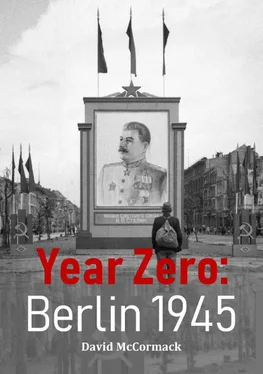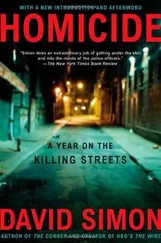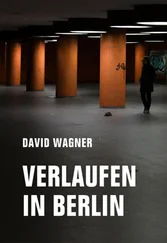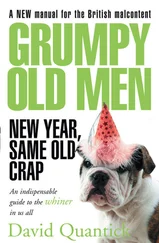Mohnke sent Colonel Claussen to negotiate the surrender. He returned with news that a surrender order had been issued and broadcast several hours earlier. For some, the end of the Third Reich meant that they had no reason to go on living. A young SS officer named Gert Stehr proclaimed, ‘Others may surrender, but Waffen SS officers should not survive the death of the Fuhrer’. He then put his pistol to his head and shot himself. Hewel, the diplomat who regretted not killing himself earlier, now followed suit. Dr Schenck witnessed his suicide, later recalling that, ‘Hewel had put the pistol to his temple and squeezed the trigger as he bit on a cyanide capsule’. Shortly afterwards at approximately 20.00hrs, the surrender was completed. For those who chose to live, years of imprisonment lay ahead.
Bormann and Baur had in the meantime faced their own difficulties in finding a way out, as neither knew Berlin intimately. They made their way along the railway embankment to the Lehrter Railway Station, passing close to the burnt out Reichstag. Three other survivors of the break-out, including Dr Stumpfegger had by now joined them. As they approached the station, they were surrounded by boisterous Soviet troops who mistook the group for Volkssturm men. These Soviet troops appeared to pose no immediate threat as they happily shared their food and cigarettes. In this convivial atmosphere, Bormann and Dr Stumpfegger took their opportunity to slip away unnoticed. They made their way up the Invalidenstrasse, but could not progress any further as the route was blocked by more Soviet troops. As their world closed in around them, they made their way back towards the Lehrter Station. There appeared to be Soviet troops everywhere. With no possible way out, Bormann and Dr Stumpfegger resorted to biting on their cyanide capsules. Later, at Nuremberg, Bormann would be tried in absentia as rumours of his escape to South America persisted. It was not until 1972, that his remains were discovered close to the Lehrter Railway Station. Later, advances in forensic science were used to positively identify his remains.
Not all of the troops tenaciously holding on to their shrinking perimeter received the order to break-out. The Latvian SS troops defending the Air Ministry and the French SS troops defending an administrative building near to the Gestapo headquarters on Prinz Albrecht Strasse were thus effectively abandoned to their fate. The Latvian troops broke-out independently, getting as far as Pankow. Here, they split up, leaving each man to fend for himself. The much reduced French volunteer force fought on, in what was fast becoming an apocalyptic scene of destruction. Soviet sappers used incendiary devices to create a searing mass of flame which forced the defenders to take up new positions.
Later that night, General Krukenberg acted on his own initiative by ordering his own SS volunteers from the Nordland Division to gather around Friedrichstrasse Station in preparation for a break-out to the north-west. The majority of the remaining French volunteers received the order which was delivered by one of Krukenberg’s squad leaders named Patzak. However, Patzak didn’t reach SS Captain Henri Fenet’s unit of French volunteers which was still holding out in the Ministry of Security building. Fenet’s troops realised that they were on their own when scouting parties revealed that there were no friendly forces in their vicinity. Later, they made their way to the Air Ministry, where on hearing that the surrender had come into force, gave themselves up.
Meanwhile, the 1,500 troops who gathered for the break-out inevitably drew the attention of Soviet units in the area. Using their last remaining armoured vehicles in the vanguard, the Nordland troops attempted to smash their way through to safety. They were met everywhere by Soviet tanks and artillery which exacted a heavy toll on their lightly armed troops. On Lortzingstrasse (close to the Gesundbrunnen U-Bahn Station) the previous commander of the of the Nordland Division (General Ziegler) was killed by shrapnel from a Soviet mortar round. With no possibility of the break-out succeeding and with his unit shattered and fragmented, Krukenberg hid out in a workshop, having taken off his uniform and disguising his identity by donning a pair of old overalls which he had found. Despite his attempts to melt away, he was discovered and taken prisoner the following day.
On the same day, a sizeable column of troops and civilians struck-out from Ruhleben towards Spandau. The attempt was spearheaded by the remaining tanks and armoured vehicles from the Muncheberg Panzer Division and the 18 thPanzer Grenadier Division. Meanwhile, word had spread quickly amongst the civilian population that General Wenck’s 12 thArmy was at Nauen. There were also rumours that hospital trains were waiting to take the wounded to Hamburg. Desperate to escape the Soviet stranglehold, thousands of civilians joined the troop column heading towards the Havel bridges which were being tenaciously held by the Hitler Youth.
The initial thrust was successful, albeit at a high cost in lives. As the column rushed the Charlotte Bridge, 20mm quick firing guns gave covering fire. The bridge became a scene of bloody chaos, as desperate people scrambled over each other to reach the far side. One of those killed in the mad scramble for safety was Ernst Himmler (brother of Heinrich Himmler). Sheer weight of numbers enabled the column to overwhelm the Soviet defence and break through into Spandau. The town was heavily occupied, with strong defences in and around the town hall. German tanks shelled the building as a preliminary to an assault by troops of 9 thParachute Division. The developing battle provided cover for trucks laden with troops and civilians to make a dash for safety.
One of the would-be escapees was Helmuth Altner, a seventeen year old veteran of the Oder battles and Berlin street fighting. Somehow, he managed to clamber onto the mudguard and bonnet of an overcrowded truck. Holding on for dear life as the truck picked up speed, he was one of the few to survive the pursuing Soviet troops as they sped through Staaken and on to Ketzin. This successful German break-out greatly agitated the Soviet command who were concerned that members of Hitler’s inner circle may have used the opportunity to escape. Burnt-out German tanks and vehicles were checked thoroughly. Much relieved, Zhukov was later able to report that, ‘Among the crews killed, none of Hitler’s entourage were found’. One can only imagine Stalin’s wrath if there was even the slightest suggestion that senior Nazi figures were making a last minute bid to escape.
Meanwhile, Altner had been wounded in the foot. Whilst his wound was painful, he remained hopeful as his column had advanced to within almost touching distance of friendly forces. However, his mood quickly turned to despair as the route through to the nearest German positions was blocked by Soviet troops occupying the village of Pasewin. An attempt to outflank the Soviet position by skirting around the hamlets of Zachow and Roscow ended in failure. Altner then found himself alone, as his foot wound prevented him from keeping up with the others. The area was now swarming with Soviet troops. There was no way out. Altner later recalled the moment of his capture:
I had fallen behind a little, as the pain in my foot had become unbearable. The Russians are walking scattered among us… Suddenly one of the Russians stops and waits for me, as I am the last… I slowly go up to him. Then he takes my arm. I am afraid that he will take me aside somewhere where no one will see us, and put an end to me, but then I notice that he is supporting me, walking in step with me and guiding me… I am astonished. The immense tension of the last few days gives way inside me, and I am suddenly unable to hold back the tears…
Читать дальше












